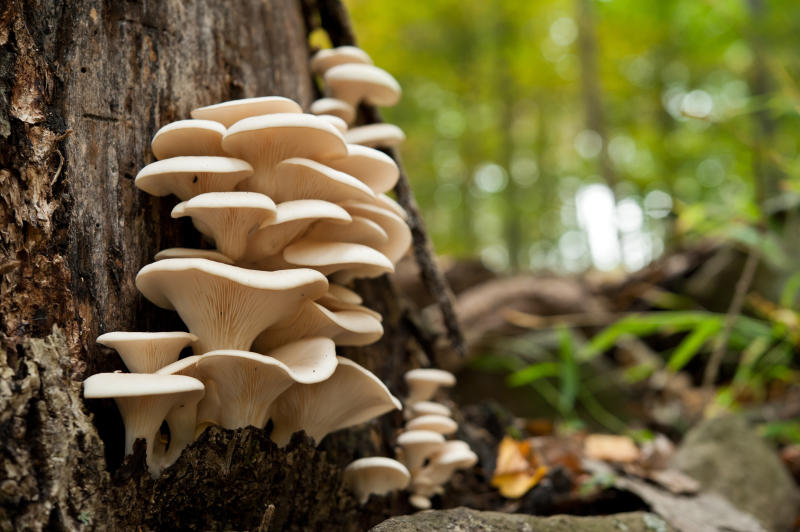You don't need a farm to grow mushrooms

As the effects of the coronavirus pandemic continue to bite, many people have found themselves locked in their homes away from a busy office schedule. Some have begun to look into producing food at home to pass the time. The easiest option would be to start a small vegetable garden.
But have you ever thought of growing mushrooms? If not, edible mushrooms, such as shiitakes and oysters are high-value crop, that can be grown at home easily, affordably and in small spaces.
You can grow mushrooms as a side-line business, part-time source of income or as a full-time project. It can be done in a small space and with little start-up cost.
First, you will need to identify a growing area with controlled temperature, humidity and light, which are important factors in the production of mushrooms. The most appropriate and cost effective place to grow mushroom is a grass-thatched mud house. Make sure the house is rodent proof to keep off rats.
Start small; don’t try to grow more than 20 kilos per week until you understand the entire process. You can scale up once you understand the entire process. This will give you time to get a feel of what is involved. The decision to scale up should be informed by demand for the produce.
The process
Get the planting seed. Preparing your own planting seed called spawn can take a lot of time because the process has a number of steps involving multiplying small amounts from petri dishes to larger quantities on grain. This takes a lot of time and practice to get right.
Buy your spawn and focus on growing your own mushrooms and selling the produce. It may cost a bit extra, but it will save you a lot of time and setup expense, and give you time to focus on other important things. The best practice is to start growing mushrooms using low-tech methods, which don’t require an expensive setup.
Buy the planting substrate. Many growers use straw or wood chips. Straw is generally the preferred method. Get straw that can be chopped up into little pieces and make it wet.
Heat the straw in boiling water for 30 minutes before spreading it on a clean surface to cool. Pack the straw and spawn in plastic bags. Place two to three inches of straw into the plastic bag and then lightly sprinkle the spawn on top, seal and then poke holes into the bag.
Maintain temperatures. The crop grows best at around 250C. Place the bags on a shelving unit and ensure that no natural light enters the room by covering all the windows and cracked areas. Use a red ‘darkroom’ light when you need to check on your bags. Immediately the tiny pinhead mushrooms begin to form near the air hole, you’re ready to move on to the next step.
Fruiting. During fruiting, the growing area requires a high level of humidity. Unlike the incubation room, you’ll actually need a lot of natural light – at least 12 hours a day. To shock your mycelium, which will force it into fruiting, move the bags to a cool place for a day, such as a basement or another cool place, and then move them back to the fruiting room. Next, cut away the bag, to allow mushroom growth to take place.
It’s a bad idea to do everything yourself due to various processes that are involved in mushroom production, such as sourcing supplies, mixing and inoculating the substrate, moving grow bags around, harvesting mushrooms and delivering to outlets.
Distribute the load to other persons. You will find it much easier. To succeed in the mushroom-growing business, the produce should be grown in a clean environment, harvested at the proper time, and if not sold right away, preserved as necessary.
Want to get latest farming tips and videos?
Join Us
Share this article on social
 The Standard Group Plc is a multi-media organization
with investments in media platforms spanning newspaper print operations,
television, radio broadcasting, digital and online services. The Standard Group
is recognized as a leading multi-media house in Kenya with a key influence in
matters of national and international interest.
The Standard Group Plc is a multi-media organization
with investments in media platforms spanning newspaper print operations,
television, radio broadcasting, digital and online services. The Standard Group
is recognized as a leading multi-media house in Kenya with a key influence in
matters of national and international interest.
 The Standard Group Plc is a multi-media organization
with investments in media platforms spanning newspaper print operations,
television, radio broadcasting, digital and online services. The Standard Group
is recognized as a leading multi-media house in Kenya with a key influence in
matters of national and international interest.
The Standard Group Plc is a multi-media organization
with investments in media platforms spanning newspaper print operations,
television, radio broadcasting, digital and online services. The Standard Group
is recognized as a leading multi-media house in Kenya with a key influence in
matters of national and international interest.







